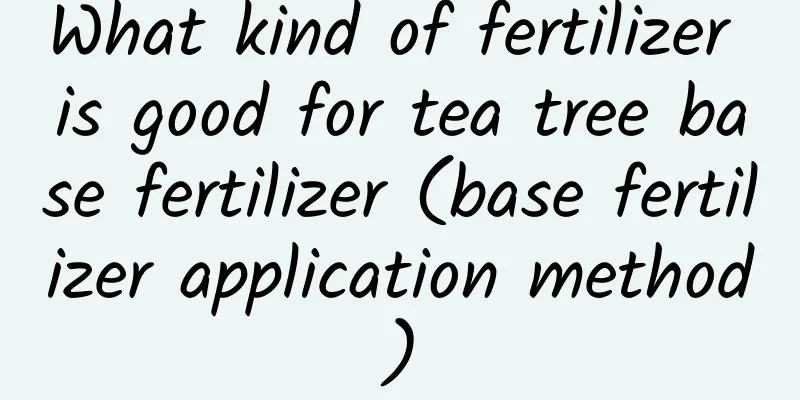What kind of fertilizer is good for tea tree base fertilizer (base fertilizer application method)

The role of tea tree base fertilizerAs a perennial evergreen crop, tea trees have obvious characteristics of nutrient storage and reuse. The above-ground part stops growing, but the underground part continues to absorb nutrients. In addition to maintaining basic metabolism during the winter, most of the absorbed nutrients are stored in the root system, which becomes the material basis for the sprouting of new shoots in the second year, playing a decisive role in the early growth and fatness of spring tea. Tea tree fertilizer selectionTo improve the fertility of the soil for tea trees, you can apply garbage fertilizer, straw, ferns, and farmyard manure after deep plowing the soil. Add lime and compound fertilizer to each hole. The base fertilizer should be applied deeply, but not too close to the roots. It is enough to be about 15 cm away from the bottom of the seedling roots. Then fill the soil and cover the top with the original base soil to prevent grass growth. How to use tea tree base fertilizerThe base fertilizer for tea trees should be applied in early to mid-October, which can improve the fertility of the soil and enhance the cold resistance of the plants. The amount of base fertilizer used in conventional tea gardens is 15,000-20,000 kg of compost plus 250-400 kg of phosphate rock fertilizer per mu, which should be applied after being piled for 5-10 days. If it is a densely planted fast-growing tea garden, the amount of base fertilizer should be increased, that is, the amount of fertilizer per mu should be increased to 25,000-30,000 kg, and 250-400 kg of phosphate rock powder should be added to the compost, and applied after piling for 5-10 days. In this way, better fertilization effects can be achieved. How to apply fertilizer to tea treesThe first topdressing time for tea trees is at the end of May, with more nitrogen and potassium fertilizers, 30% nitrogen fertilizer, 25% phosphorus fertilizer, and 30% potassium fertilizer. The second topdressing time is at the end of July, with a nitrogen, phosphorus, and potassium ratio of 30% nitrogen fertilizer, 25% phosphorus fertilizer, and 30% potassium fertilizer. |
<<: How to propagate Sedum and what to pay attention to
>>: How does spider silk roll explode?
Recommend
How much water should be put in the lotus
1. How much water should be added 1. Small contai...
How to trim glass jade
Time and method During the seedling growth period...
How to plant Houttuynia cordata in pots and how to plant Houttuynia cordata in pots
1. Time Selection Houttuynia cordata, also known ...
Can water bamboo be placed indoors?
1. Is it possible? This is a plant that prefers a...
Causes and treatments for yellow leaves of Chlorophytum comosum
1. Improper light exposure 1. Reason: It is suita...
Is the batik pink bougainvillea blooming frequently?
Batik pink is a very common variety of bougainvil...
How to care for newly bought Jianlan
1. Lighting Jianlan is a light-loving crop and li...
Planting methods and techniques of yam
Yam is a nutritious vegetable with the effects of...
What insects does acetamiprid mainly kill?
Acetamiprid is a new broad-spectrum insecticide w...
Can hydrangeas be planted in the yard?
Can hydrangeas be planted in the yard? Hydrangeas...
Primrose pest control
Diseases This plant is prone to "brown spot ...
The main value of succulent black feather jade
1. Purification Placing the Jade Plant in your ho...
How to make the spider plant bloom and grow vines quickly
1. Suitable potting soil If you want to encourage...
How often should I water the Kalanchoe in summer?
How often should Kalanchoe be watered in summer? ...
What to do if the roots of Begonia sempervivum are rotten
1. Breathable We need to fully understand the env...









